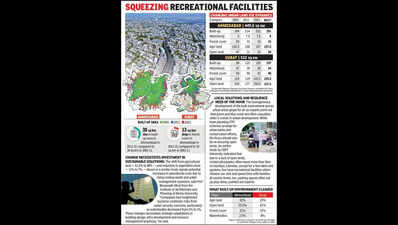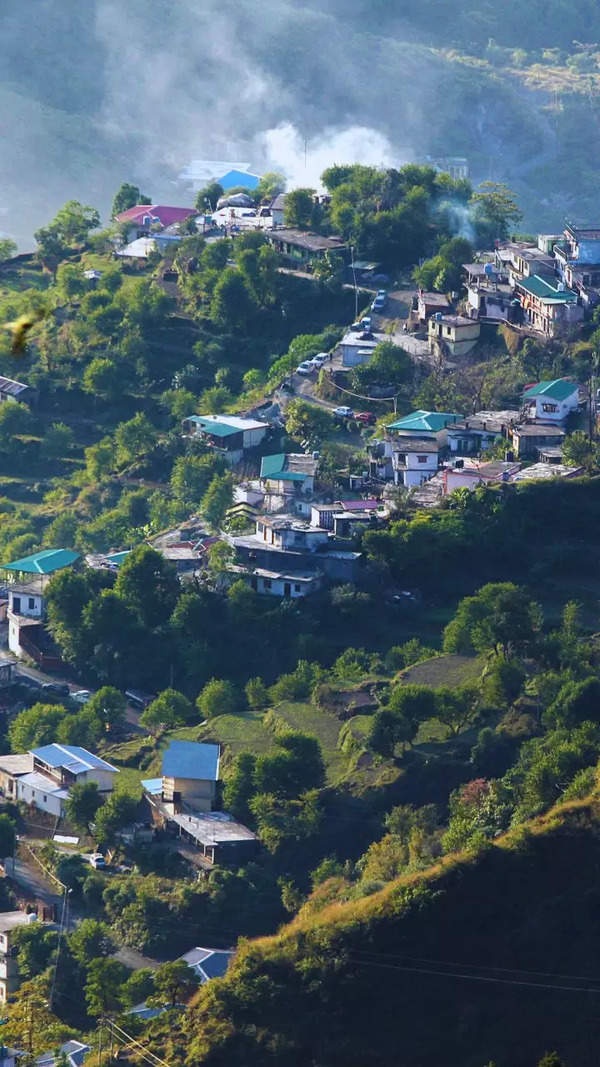- News
- City News
- ahmedabad News
- Ahmedabad adds 3.4 sq km built-up area, Surat 3 sq km annually: Study
Trending
Ahmedabad adds 3.4 sq km built-up area, Surat 3 sq km annually: Study
Ahmedabad: According to a recent study published in Springer's Discover Cities, Ahmedabad added an average of 3.4 sq km of built-up area annually between 2001 and 2021 while Surat followed closely behind, growing by 3 sq km per year during the same period. The research maps urban expansion across Ahmedabad, Surat, Chennai and Jaipur over two decades.
Some of the key factors that influenced urban sprawl included distance to major roads, access to drainage and the slope of the land.
Titled "Predictive Modeling of Land Cover Changes in Round 1 Smart Cities of India Using Cellular Automata and GIS", the study was conducted by a collaborative team of researchers from IIT Roorkee, Purdue University (USA), and Pt Ravishankar Shukla University, Raipur.
The researchers analysed data from Landsat for the four Indian cities on parameters such as built-up area, water, forest, and open area for the years 2001, 2011 and 2021 to assess the decadal changes. They also developed a model to forecast the 2031 scenario.
In Ahmedabad, the central business district (CBD) was accessible within 9km, while major roads were within 6km. It maintained drainage systems within 800 metres and had a population density of 9,800 people per sq km.
In Surat, the CBD was accessible within 12km and major roads within 6km. The city's drainage infrastructure was available within 900 metres. It had a population density of 13,900 people sq km. Both cities exhibited relatively flat terrain, with land slopes less than 8 degrees.
The two other cities included in the study recorded diverse trends of urbanisation. While Chennai added 1.7 sq km of built-up area annually between 2001 and 2021, Jaipur added 4.4 sq km in the same period. In all the cities included in the study, a drop was seen in forest cover, open land and agricultural land to pave the way for urban development.
Ahmedabad: According to a recent study published in Springer's Discover Cities, Ahmedabad added an average of 3.4 sq km of built-up area annually between 2001 and 2021 while Surat followed closely behind, growing by 3 sq km per year during the same period. The research maps urban expansion across Ahmedabad, Surat, Chennai and Jaipur over two decades.
Some of the key factors that influenced urban sprawl included distance to major roads, access to drainage and the slope of the land.
Titled "Predictive Modeling of Land Cover Changes in Round 1 Smart Cities of India Using Cellular Automata and GIS", the study was conducted by a collaborative team of researchers from IIT Roorkee, Purdue University (USA), and Pt Ravishankar Shukla University, Raipur.
The researchers analysed data from Landsat for the four Indian cities on parameters such as built-up area, water, forest, and open area for the years 2001, 2011 and 2021 to assess the decadal changes. They also developed a model to forecast the 2031 scenario.
In Ahmedabad, the central business district (CBD) was accessible within 9km, while major roads were within 6km. It maintained drainage systems within 800 metres and had a population density of 9,800 people per sq km.
In Surat, the CBD was accessible within 12km and major roads within 6km. The city's drainage infrastructure was available within 900 metres. It had a population density of 13,900 people sq km. Both cities exhibited relatively flat terrain, with land slopes less than 8 degrees.
The two other cities included in the study recorded diverse trends of urbanisation. While Chennai added 1.7 sq km of built-up area annually between 2001 and 2021, Jaipur added 4.4 sq km in the same period. In all the cities included in the study, a drop was seen in forest cover, open land and agricultural land to pave the way for urban development.
End of Article
FOLLOW US ON SOCIAL MEDIA
Visual Stories
Hot Picks
TOP TRENDING
Explore Every Corner
Across The Globe











